Delivering Viable Solutions Through Design Sprints At Skycatch
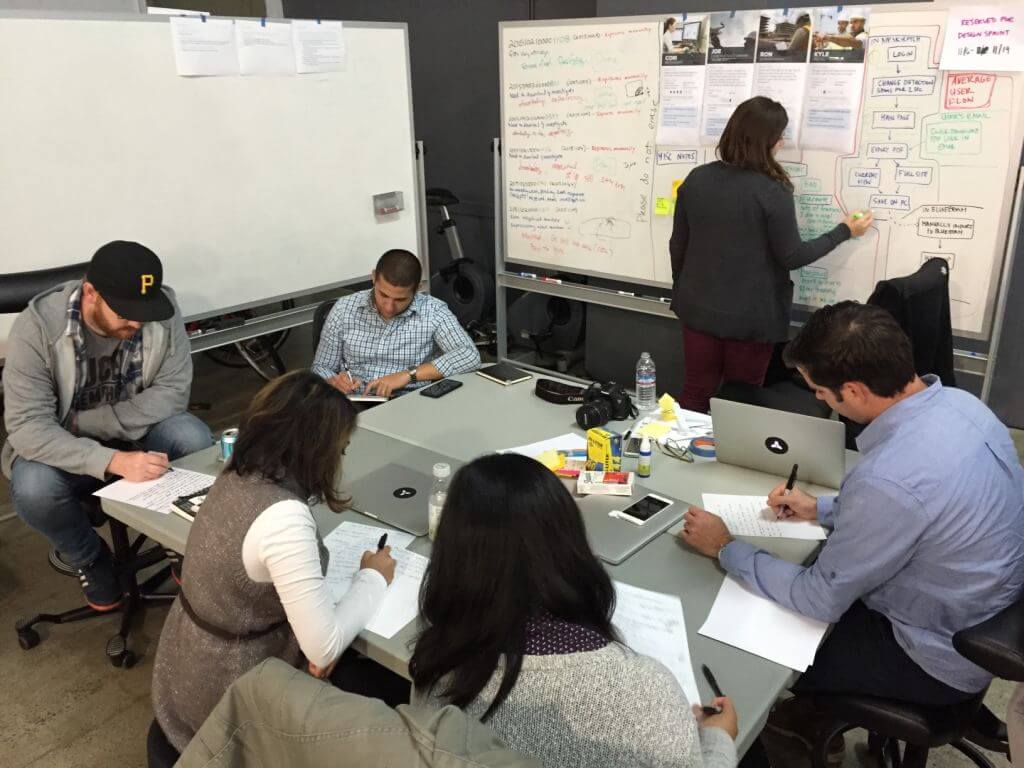 I work on the Software Product team at Skycatch. We’re a small team -- there are five of us and together we span product management, product design, customer success, and QA. Everyday we face tough choices about which feature to ship next, which bug to fix first and what’s next on the roadmap. We carefully prioritize and plan, but inevitably, something gets pushed to the bottom of the list. This leaves us with a big challenge: what happens to problems that we just aren’t quite ready to dive into yet?
I work on the Software Product team at Skycatch. We’re a small team -- there are five of us and together we span product management, product design, customer success, and QA. Everyday we face tough choices about which feature to ship next, which bug to fix first and what’s next on the roadmap. We carefully prioritize and plan, but inevitably, something gets pushed to the bottom of the list. This leaves us with a big challenge: what happens to problems that we just aren’t quite ready to dive into yet?
To tackle this challenge and get more people involved with product design, we held our first cross-team Design Sprint (based on the Google Ventures model) at Skycatch. While a normal sprint consists of 5 full days of activities, we consolidated our sprint into a mere 8 hours of design thinking, brainstorming and more.
The Team
The team included members from across the company, bringing many different perspectives to the table.
- Tom Zaiderman (Associate Product Manager)
- Sylvia Chow (Customer Success Manager)
- Farah Wahab (Product Marketing Manager)
- Brandon Montellato (Sales Engineering Manager)
- Ryan Hamley (Frontend Developer)
- Anne Brodie (Lead Designer)
- Patrick Stuart (Director of Product)
The Problem
The key ingredient to a successful sprint (besides having an awesome team), is selecting the right problem to tackle. The scope of the problem had to be narrow enough that we could tackle in just a few hours and something that we could easily track metrics on, so we focused on engaging novice users. Specifically, our goal was to get users who login infrequently, or don’t use many tools within our software, to login more often or increase time in the app.
Our goal was to get users who log in infrequently or don’t use many tools within our software to login more frequently or increase time in the app.
Day 1: Overview
We kicked off the meeting with a quick overview of the plan, followed by a business intro from Patrick. We discussed the problem we would be solving and how we could measure success based on user interactions. Being the first Design Sprint at Skycatch, it was important that we defined what it meant to be successful.
Each person explained their individual expertise that they brought to the team -- Sylvia talked about her experience with customer support, Tom talked about his experiences engaging with users at our client sites, and Brandon shared insights into our sales process and who our buyers are.
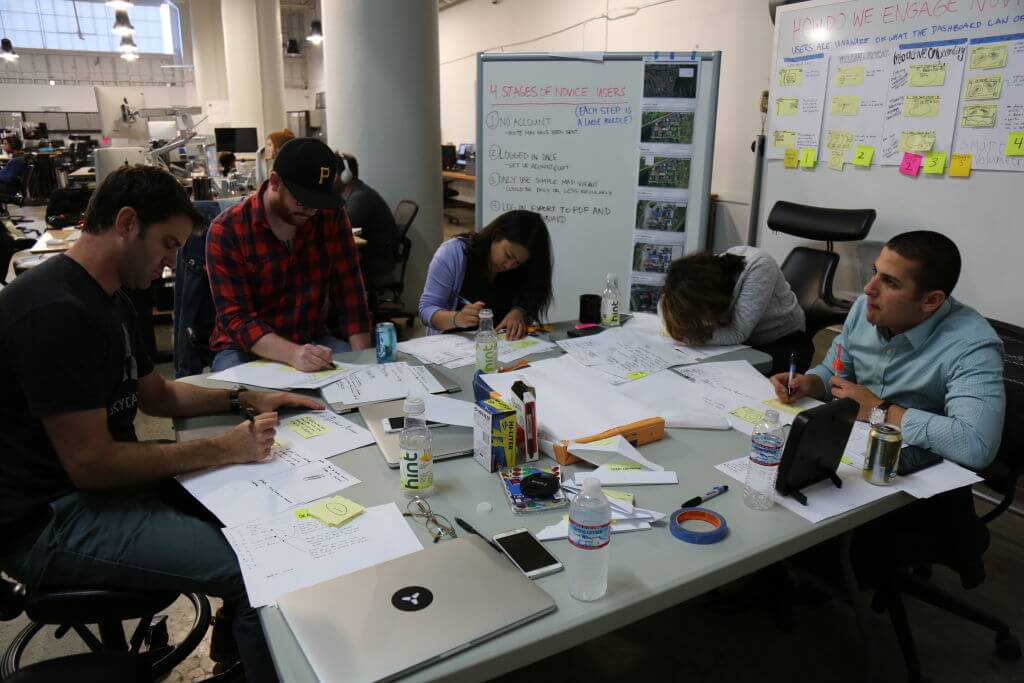
Day 2: Generate Ideas
Day two was dedicated to generating as many ideas as possible. We started by writing down everything we could think of pertaining to the problem, began drawing connections between these ideas, and then discussed how they connected to our average user interactions. The next activity was Crazy 8’s -- sketching eight of these ideas in five minutes, which breaks down to only 40 seconds per idea.
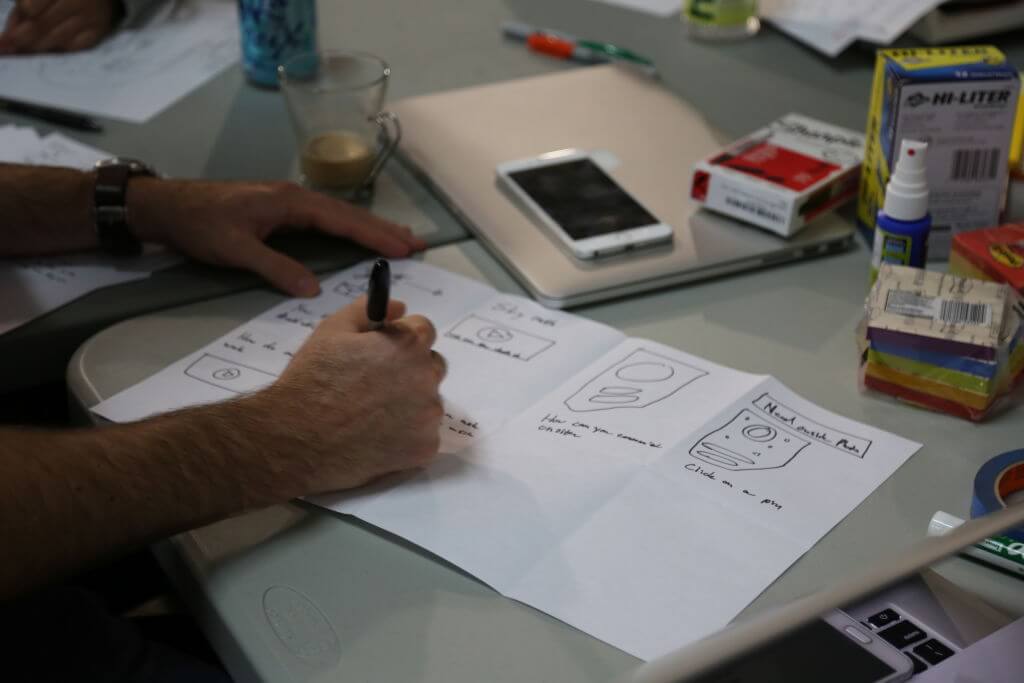
After two rounds of Crazy 8’s, we each picked our “best” idea, and drew a storyboard for it. To keep the storyboards focused, we structured each with three steps -- first this happens, then this, then this. We then ran through everyone’s storyboards. To get the ideas flowing, we put on thinking hats with a specific user mindset. Two of the mindsets included “optimist” and “technical feasibility”; the optimist pointed out the highlights of each storyboard, while the technical feasibility mindset discussed level of difficulty for implementation. Besides getting to wear an awesome hat, the thinking hats allowed each of us to focus on a different mindset than we may normally embody.
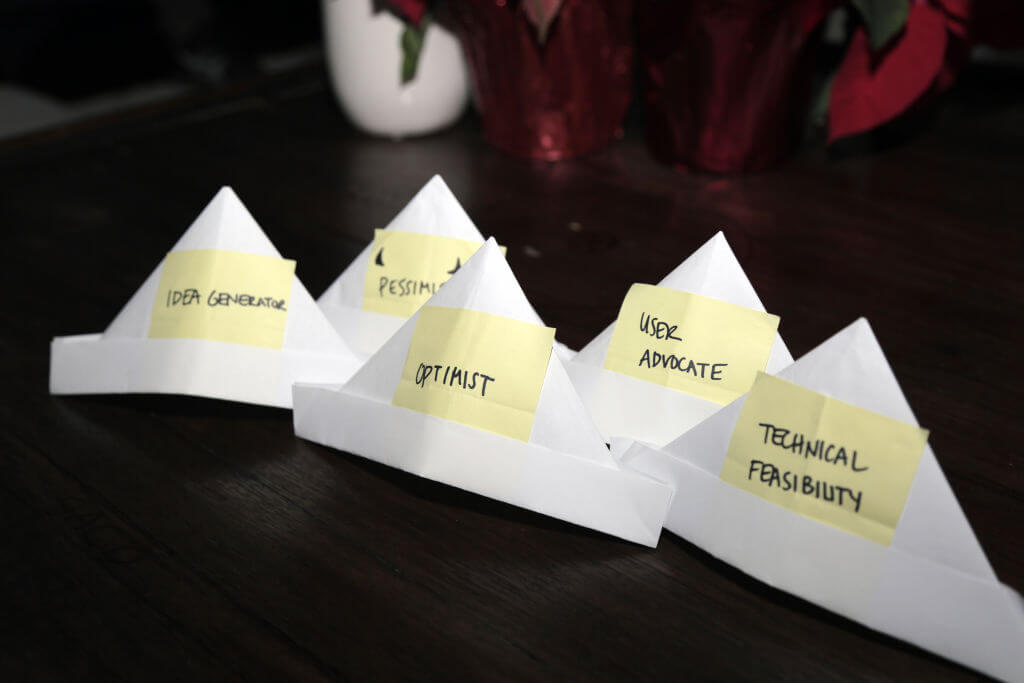
Day 3: More Ideas & Storyboards
We started Day 3 with a warm-up to help break out of our day-to-day routines and get ready for the day’s activities. We broke into pairs and using our non-dominant hands, we had to make a paper airplane with a partner. We concluded with a contest to see which plane went the farthest.
“It was a little surprising how much verbal communication was needed for the paper plane exercise, but still lots of fun in the end!” - Sylvia Chow
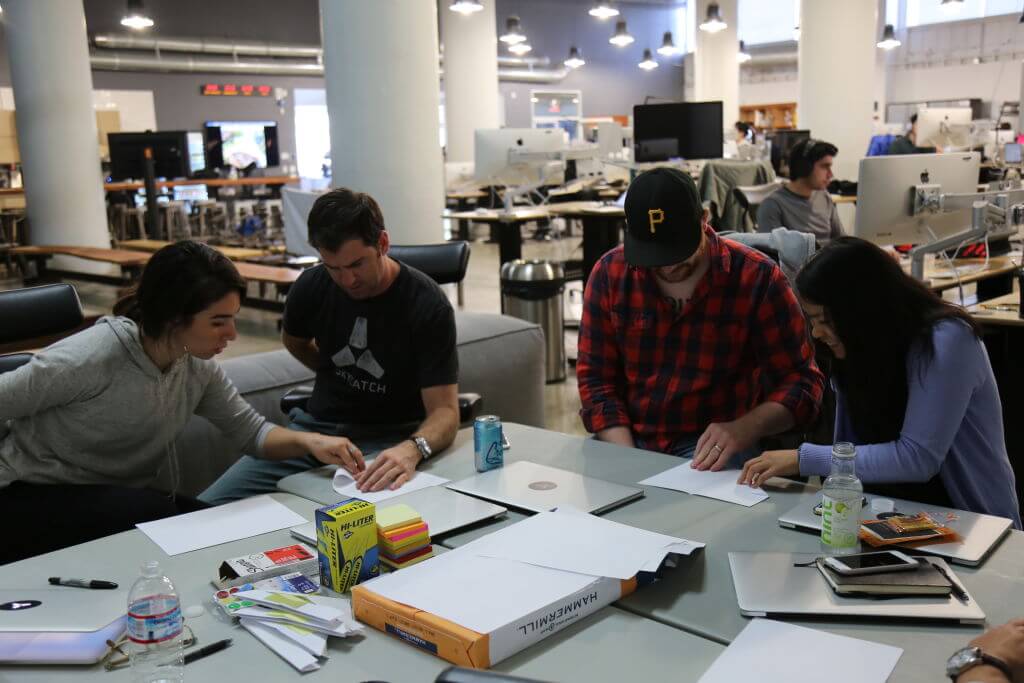
We spent the first half of Day 3 doing more super-rapid ideation and storyboarding to give us more ideas to discuss. We reviewed all the storyboards and then picked our overall favorite storyboard. Next up was picking our favorite storyboard that met the constraints of the Design Sprint -- minimal engineering effort for a fast release and easily trackable, and in accordance with the success metrics we set at the beginning of the sprint. We talked about these storyboards in more detail and everyone voted once more.
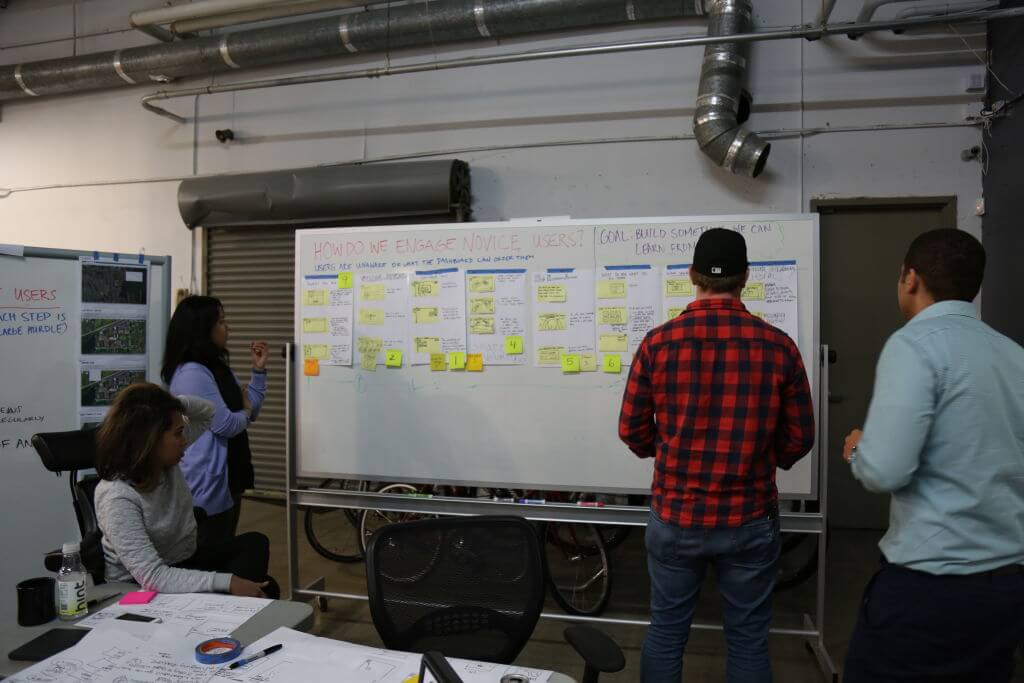
Day 4: Refinement
Having only an hour on Day 4, we focused on iterating on the final storyboard rather than building a prototype. We talked about what we liked or didn’t like about the final storyboard, and continued to evolve the idea until we agreed upon a design (and we ran out of time). We did a recap on the week and talked about what we could improve on next time.
Day 5: User Testing
While Day 4 was the last of the group sessions, it was not the end of the sprint. I put together wireframes based on our ideas in preparation for day 5, which entailed visiting a client site to talk with users and get their feedback on our solutions. The users I spoke with not only validated our solution, but also recognized that we identified an important key problem to solve. In addition, talking with our users also provided us some new insights into our user’s mindsets.
Results
The Design Sprint was a valuable experience for everyone involved. It allowed non-designers to learn about design and gave everyone an opportunity to help shape our tools.
“It was an excellent experience to think about our platform as our customers would...think in their work boots for a day!” - Brandon Montellato
We look forward to incorporating lessons learned from this initial Design Sprint into those in the future, and implementing our findings into the next releases of the Skycatch Viewer.
By Anne Brodie, Lead Designer



